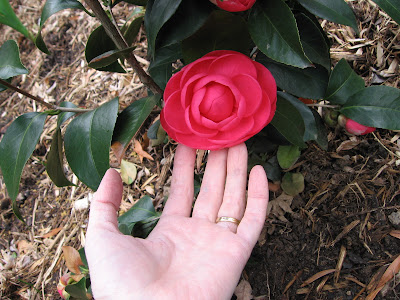This post originally appeared in Emily Stashower's always-interesting garden blog, Roots in Reality.
I suppose
that to some extent that it is true. My
garden, in suburban Maryland, has more azaleas than any other shrubs. The home’s original owners, enthusiastic and
skilled gardeners, replanted a large slope covered with honeysuckles and poison
ivy with over 100 varieties of azaleas. This wasn’t an arbitrary act of an
ordinary azalea enthusiast; the previous owner was Head of USDA’s Soil
Conservation Service (as it was known then) and took the selection of plants
very seriously. Although many shrubs were
lost over the years, the variety astonishes me.
Not knowing
their proper names, I’ve given them nicknames.
The soft red is the first to arrive.
The largest
of our blooms is the giant magenta.
The hot-pink bee azalea makes me wonder what azalea honey would taste like
So, yes,
everything is in one basket. We have a
couple of glorious weeks in which I can hardly believe that all this beauty
belongs to us. Then, the azaleas fade
away, as they are now, with a few remaining reds and pinks. All will settle into “gruelish green” soon,
but the memory of that smashing, unphotographical vista will stay with me.
When I was child, I heard the term “Georgia Peach” from my
aforementioned Southern family. I
assumed that it meant a sweet and pretty woman with a nice complexion. That is, until I had a truly fabulous Southern
peach bought from a roadside stand. This
was a rich, pure delight with a flavor that knocked my socks off. All peaches before and all peaches since have
paled in comparison. I remember this
peach like a soldier might remember a beautiful, charming, compelling
woman. He’d spend his three weeks of leave
just trying to be in the same room with her, and she’d be worth it.























.jpg)











.jpg)





